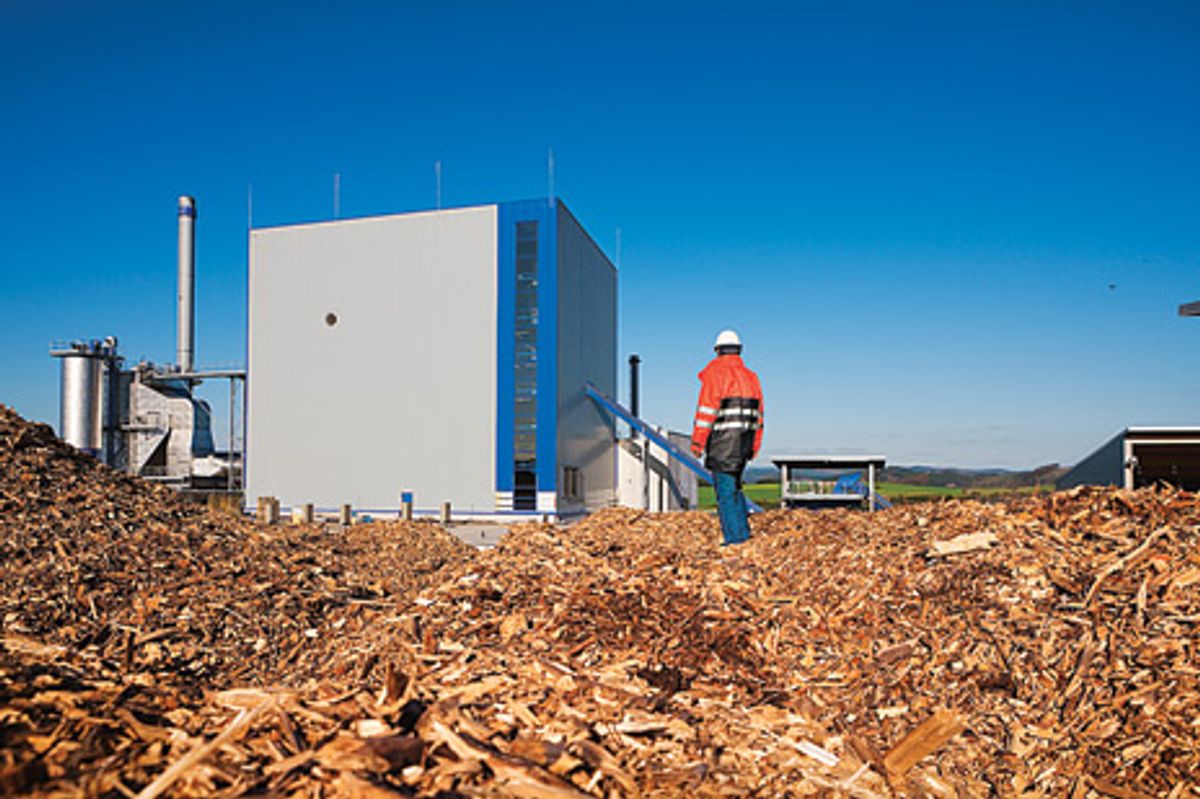An energy export boom is sweeping U.S. forests. The trees are fast becoming a crucial energy supply for European power producers seeking to meet the European Union’s goal for renewable energy use and carbon emissions reductions. Blending in biomass to coal-fired power stations is an increasingly popular strategy to meet the European targets, which call for renewable sources to meet 20 percent of energy demand by 2020 and for a 20 percent cut in greenhouse gas emissions from 1990 levels.
Experts in life-cycle analysis, however, question whether burning biomass to generate power does Earth’s atmosphere much good. That’s because trees harvested expressly for power generation—which European Commission–financed research suggests will provide at least two thirds of utilities’ biomass supply needs through 2030—potentially could have grown larger and absorbed more carbon from the atmosphere if they had been left unharvested.
Regulators appear to be listening. Late last year, the Commission’s European Environment Agency and the U.S. Environmental Protection Agency concluded independently that harvesting trees for power generation and biofuels production could actually raise atmospheric carbon levels in some cases. As a result, both Washington, D.C., and Brussels are reassessing how to count emissions from biomass combustion.
And yet, even with that policy challenge lurking, the biomass industry is quickly expanding, especially in the southeastern United States, where giant pelletizing plants are popping up to turn trees into a ready-to-burn export commodity. In 2011 the power company RWE, based in Essen, Germany, commissioned the world’s largest wood pellet plant, near Waycross, Ga. The plant dries, crushes, and presses wood from local pine tree plantations into 750,000 metric tons of pellets annually—all of it destined for RWE power stations in the Netherlands and the United Kingdom.
Meanwhile, Enviva, based in Bethesda, Md., is fashioning itself into a formidable supplier of wood fuel. At the close of 2011, the firm began shipping pellets from its plant in Ahoskie, N.C., which produces 350,000 metric tons per year. Enviva is now building a still larger facility nearby in Northampton County, N.C., and is planning another in Courtland, Va.
European utilities are lining up for the pellets. Enviva has a contract to supply 480,000 metric tons to Belgium-based Electrabel, a subsidiary of the Paris-based GDF Suez Group. And in February, Germany’s E.On signed a multiyear deal for 240,000 metric tons annually.
Power producers assert that blending biomass into coal at their plants reduces annual greenhouse gas emissions by displacing some fraction of their coal consumption. For example, RWE estimates that the pellets from its Georgia plant will “save” around 1 million metric tons of CO2 per year. Such claims are based on the assumption that biomass energy is fundamentally carbon neutral because the carbon emitted during combustion is sucked back out of the atmosphere when the biomass grows back. To date, most regulators have agreed with the endorsement of the Society of American Foresters. The society argued in the Journal of Forestry last year that this simple accounting is reasonable in the United States, where forest inventories have increased year over year since the 1930s.
But many life-cycle analysts say that a closer look reveals several flaws in biomass power’s zero-carbon designation. The biggest is an opportunity cost that comes with every tree that’s cut down: the additional carbon dioxide that the tree would have sequestered had it been left to grow instead. “If you’re cutting down trees and burning them, you’re reducing your carbon [sequestering] stock,” says Eric Johnson, editor of the Environmental Impact Assessment Review.
Even where net reductions are likely, they may be delayed by decades. A February 2012 study commissioned by the National Wildlife Federation and the Southern Environmental Law Center, modeled proposed biomass expansions in the southeastern United States. In the study scenario, export-driven pellet production jumps from nearly 1.8 million metric tons to more than 3 million metric tons, while the number of local biomass power plants—burning mostly forestry leftovers and other waste biomass—more than doubles from 17 to 39. The study projected that new trees would need 35 to 50 years to recover the carbon dioxide emitted from the increase in biomass consumption.
Similar case studies estimate that biomass payback will come slower still for trees harvested from slower-growing northern forests.
Delayed carbon reductions represent a policy conundrum for biomass power generation, which competes against other renewable energy sources like photovoltaics and wind power. Solar and wind pay back the carbon debt from their manufacture and installation in just 5 to 10 years. And fast-acting climate solutions are more valuable, because most climate scientists agree that global temperature change should be kept under 2 °C to minimize extreme impacts predicted by models, such as blistering heat waves and radical shifts in precipitation.
It’s no surprise, then, that while the biomass power industry booms, international standards bodies and regulators are beginning to take a second look at its environmental bottom line.
